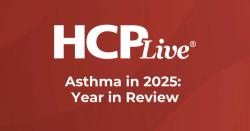
OR WAIT null SECS
Al Rizzo, MD: The True Burden of COPD
Dr. Rizzo provides a look into the current methods of COPD screening, and how patient treatment potential is changed.
A physician’s role in chronic obstructive pulmonary disease (COPD) care is managing symptoms and exacerbations. A patient’s role is in maintaining a resistance to the chronic lung disease’s burden.
In an interview with MD Magazine®, Al Rizzo, MD, chief medical officer of the American Lung Association, explained the currently practiced protocol for COPD diagnosis and care, and the importance of pulmonary rehabilitation in patients.
MD Mag: Are current practices and procedures for COPD diagnosis optimized?
Rizzo: A lot of this falls back to education again, and having physicians be well-attuned to the risk factors—the right age, the right smoking, history of the right symptoms that a patient may be demonstrating to lead them to think they have COPD—doing a spirometry, and then going from there, with regard to the proper drugs based on the symptoms that are there.
The exacerbations tend to occur in individuals once they have that first exacerbation. We know they're more likely to have the second or third exacerbation. We also know that the more severe their airflow obstruction is, their higher risk of exacerbation. One of the measurements is the FEV1, that measures the amount of air they can exhale during for a second. The lower that is that puts them into a category where there's a higher rate of exacerbation.
Right now, the guidelines for treating COPD really look at controlling symptoms and controlling exacerbations. Controlling the symptoms help the patient on a day-to-day basis to be hopefully at a more normal quality of life. Each exacerbation, unfortunately, causes a decrease in lung function. It may not always come back up to that baseline.
So, if patients continue to have exacerbations throughout the year, they're spending a fair amount of time in a more debilitated state. So we want to control the exacerbations and not have them be going back into the hospital. COPD represents one of the highest, if not the highest, reason for rehospitalization in a 30-90 day timeframe.
So, controlling the drugs, controlling the airway outflow obstruction, and then controlling the exacerbations is key to managing COPD.
MD Mag: How do potential patient outcomes change once a COPD diagnosis is made?
Rizzo: If they are identified—as I said—getting vaccinated appropriately, some individuals may benefit with what's called pulmonary rehabilitation.
Pulmonary rehabilitation is a more structured exercise program for patients with COPD, and for that matter, pulmonary fibrosis and other lung diseases. But COPD is the main one that might benefit from this.
It's a combination of educating them about their drugs, about the disease, and making sure that they stay conditioned—treadmill, elliptical, walking to the mailbox back and forth. Even if they're not part of a structured program, it's very important that these individuals maintain a level of activity, because once they become sedentary, they lose muscle tone. And when they get up to try to walk across the room, they're going to get more short of breath, because they lost muscle tone or are deconditioned—not because their lungs got any worse.
So one of the main things an individual can do once they're diagnosed with COPD, along with learning about it, taking the medications, is to stay as active as possible. I tell my patients: don't feel like you have to run a marathon, but make sure you get up, walk. When you get out of breath, stop and rest. And keep walking. Don't become a couch potato.



